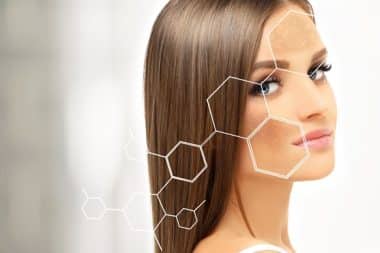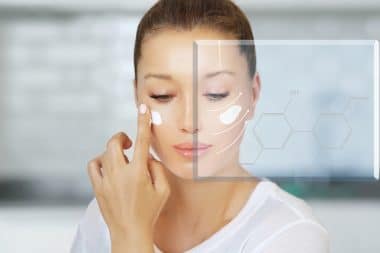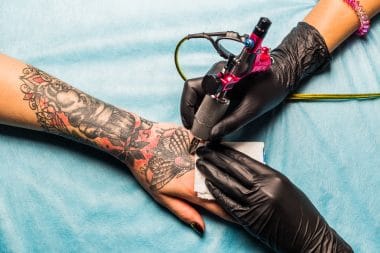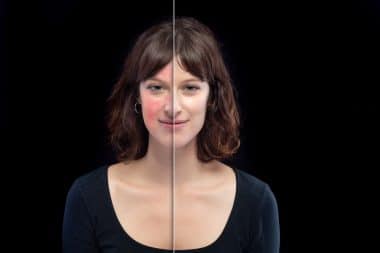One day you are relieved that your acne is all gone, yet another day you realize that the scars on your face are screaming for attention. And then your search on how to get rid of acne scars begins.
We know how you feel, we’ve been there. But just like us, you, too, can get away from that place and ultimately say goodbye to your stubborn acne scars. Below are some tested and proven ways that you can try for yourself:
Know What Type of Acne Scar You Have
Contrary to common belief, there aren’t just one but rather four types of acne scars. Once you know what type of scar you are dealing with, it is easier for you to choose the most effective treatment on getting rid of such scars.
- Ice pick scars are narrow, pinpoint scars that can go deep into the skin. They look like tiny round or oval holes. By its name alone, the area with ice pick scars looks like it has been pierced with an ice pick or a sharp instrument. These scars are the hardest to treat since they extend deeply under the surface of the skin.
Treatment: These types of scars won’t go away with over-the-counter or prescription topical ointments or creams. The best treatment options for ice pick scars are punch excision and punch grafting. Both procedures are performed by a dermatologist with the use of local anesthesia just to numb the affected areas.
Punch excision and punch grafting both leave some scars after the treatment, but the resulting scars are flat and level with the surrounding skin so they are not that obvious.
- Rolling scars cause a shallow rolling or wave-like depression with rounded edges. The skin looks rugged and uneven.
Treatment: Subcision is the best treatment option for rolling scars. This simple surgical procedure is also done under local anesthesia as an out-patient. Once the area is numbed, a hypodermic needle is inserted under the skin, breaking down the connective tissues holding the scar to the undamaged skin below. The procedure encourages the skin to regenerate and promote the growth of new collagen, which will lift the depressed areas causing the scars.
Â
- Boxcar scars are round or oval depressions with sharp, angular edges. These scars give the skin an uneven and pitted appearance.
Treatment: These types of scars can be treated with punch excision and punch elevation, but the most common treatment for boxcar scars is dermal filler.
Â
- Hypertrophic scars are raised, firm scars that are most often found on the torso.
Treatment: There are several treatments available for hypertrophic scars. The best treatment for you will depend on your situation but can include silicone gels, cryotherapy, steroid creams, tapes, pulsed dye laser treatments, or injections to aid in shrinking and flattening the scars. Utmost care is important while treating the scars to prevent in aggravating the skin which can worsen the scars.
Schedule an appointment with your dermatologist if you are still unsure about the type of your acne scars.
What is the Best Treatment for Acne Scars?
Preventive care is the best way to get rid of acne scars, but if you are already past that stage, the first thing that you have to do is to identify the type of scar that you have and ensure that it’s not just discoloration. Scars can be permanent, but discoloration due to acne tends to just fade away after 6 to 12 months.
Below are some of the products that you can use to improve the appearance of some permanent acne scars as recommended by dermatologist David Lortscher, CEO and founder of Curology skincare:
- Use a target-specific healer after a potential scar appears just like Clean and Clear mark treatment. This product uses salicylic acid which can help prevent breakouts or damage to the skin. “However, sometimes salicylic acid can temporarily worsen inflamed acne,” Lortscher warns. Hence, use it carefully and discontinue if you notice additional inflammation on the affected areas.
- Get your hand on a prescription for azelaic acid. According to Lortscher, azelaic acid can lighten dark spots brought by acne and sun exposure.
- Use niacinamide to suppress hyperpigmentation. Niacinamide is effective in minimizing dark spots and hyperpigmentation, which works by impeding the pigment from appearing on the outer layer of the skin. With regular use, the pigment supply runs down leading the dark spots to fade. If you need a high-strength product, your doctor can give you a prescription. However, you can easily purchase lower-strength products with niacinamide over-the-counter. Dr. Lortscher recommends Paula’s Choice 10% Niacinamide Booster.
- Make use of micro needling at home to boost collagen and elastin production. Micro needling can be done at home with the use of a derma roller, which you can purchase in stores or online. “Micro needling creates a bunch of small ‘injuries’ to the skin, which in turn can increase collagen and elastin production as they heal,” Lortscher says.For this, it will be better to ask your doctor for a recommended product and make sure to buy derma rollers that are FDA-approved. There’s also a chance to over-treat oneself with derma rollers, so it’s better to seek the expert advice of your dermatologist.
Tips For Dealing With Acne Scars #HealthStatus








Reply